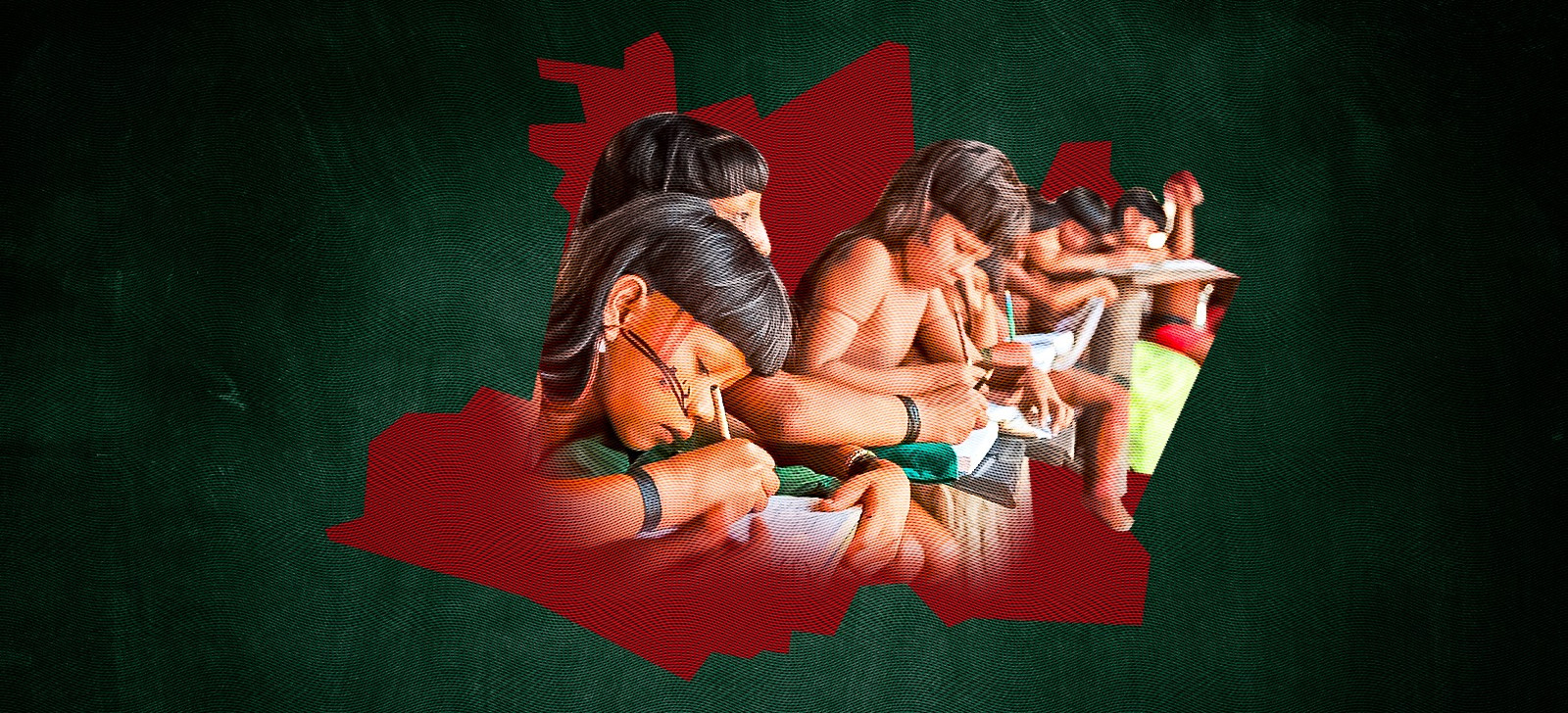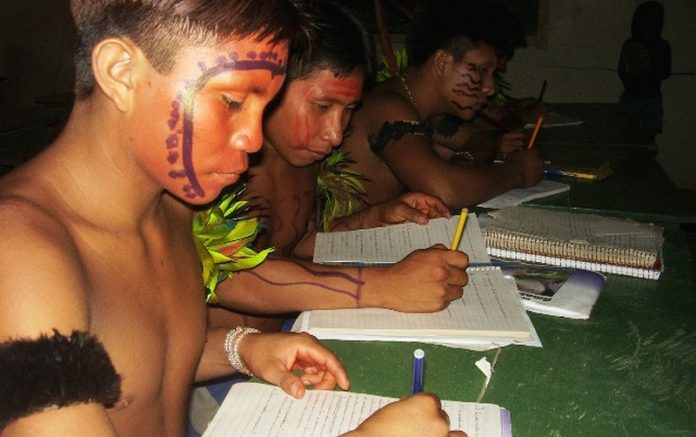School attendance rate of Indigenous People increases in Northern Brazil
01 de March de 2025

By Jadson Lima – From Cenarium
MANAUS (AM) – Data from a report titled “2022 Census: Education: Preliminary Sample Results” indicate that Amazonas, a state located in northern Brazil, ranks seventh nationally in school attendance rates among Indigenous people. The survey was conducted by the Brazilian Institute of Geography and Statistics (IBGE) and was released on Wednesday, the 26th.
Amapá leads the list with a rate of 46.07%, followed by Tocantins (43.1%), Maranhão (39.83%), Acre (39.65%), Pará (38.96%), and Mato Grosso (38.55%). Among the top ten ranked states, nine are part of the Legal Amazon region. Roraima appears in eighth place with 35.32%, while Rondônia registers 34.13%. Mato Grosso do Sul closes the list with 33.12%, standing out as the only state from the Central-West region among the ten best-positioned states.

IBGE also revealed that approximately 22,362 children up to five years old are attending schools or daycare centers in Amazonas, which corresponds to 33.3% of the total recorded in Brazil. Nationwide, approximately 67.1 thousand children in this age group attend educational institutions. The school attendance rate among five-year-old Indigenous children in Amazonas is 5.6% for boys and 5.18% for girls.
According to IBGE’s coordinator of information dissemination, Adjalma Nogueira, Amazonas demonstrates a commitment to basic education, as evidenced by the high school attendance rate. He also points out that the low proportion of people with completed primary and higher education highlights the need to strengthen educational stages.
“The large number of children and daycare centers in Amazonas shows a focus on early childhood education. However, challenges in accessing daycare and early childhood education persist in some areas, requiring attention to expand the availability of daycare centers and preschools in these locations,” Nogueira stated.
Additionally, IBGE presented broader data on the school attendance rate of this population. Among Indigenous people aged six to 17, a total of 120.5 thousand were attending school. Of this total, the majority were in primary education (97,252), followed by 15,671 in high school and 6,274 in preschool.

According to the 2022 Census, Amazonas recorded 290,982 Indigenous people aged 18 or older. Of this total, 124,188 had not completed primary education or had no formal education at all. Another 97,881 had completed high school but not higher education, while 51,747 had finished primary education but not high school. Only 17,167 people in this population had completed higher education.
Indigenous People with Higher Education
IBGE data also revealed the number of Indigenous people who had obtained a higher education degree in 2022, when the survey was conducted, totaling approximately 17.1 thousand. About 57% of this total were women, with 9,882 graduates, compared to 43% men, which corresponds to 7,285.
The 2022 Census figures also showed the fields where most of these students completed their higher education. Education leads the ranking with 4,409 graduates, followed by teacher training without a specific field (3,530) and Business, Administration, and Law (2,760).

